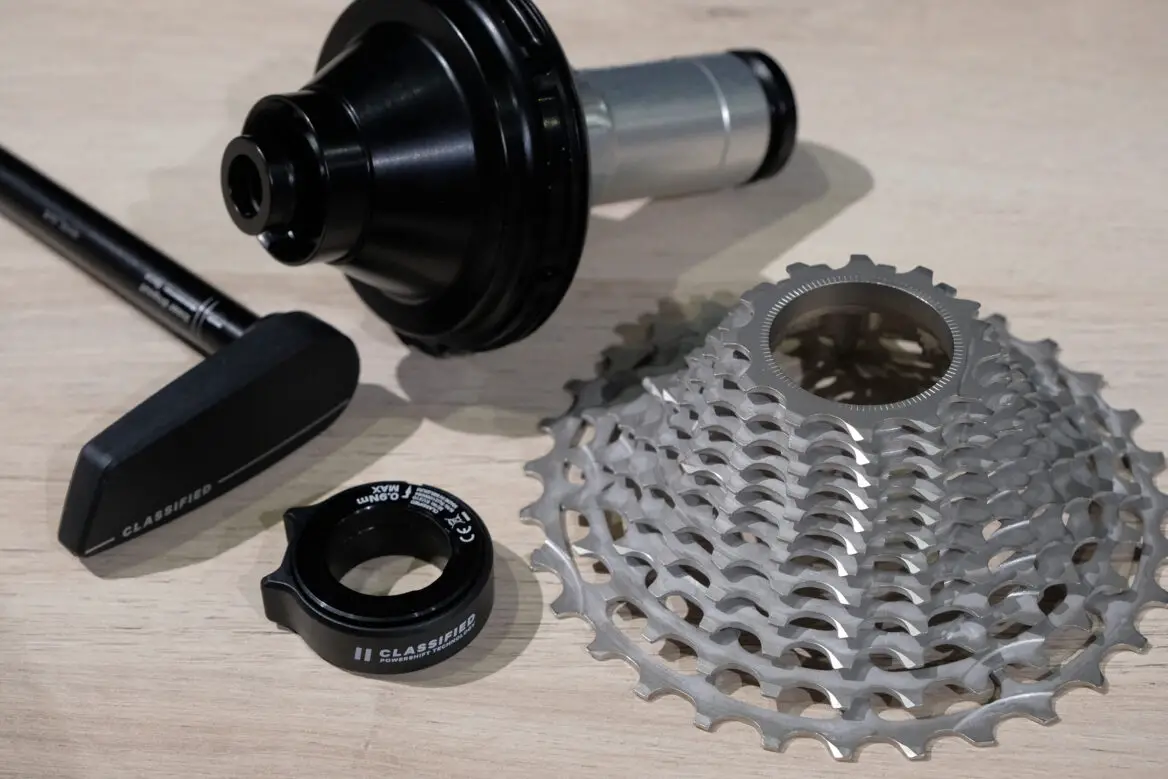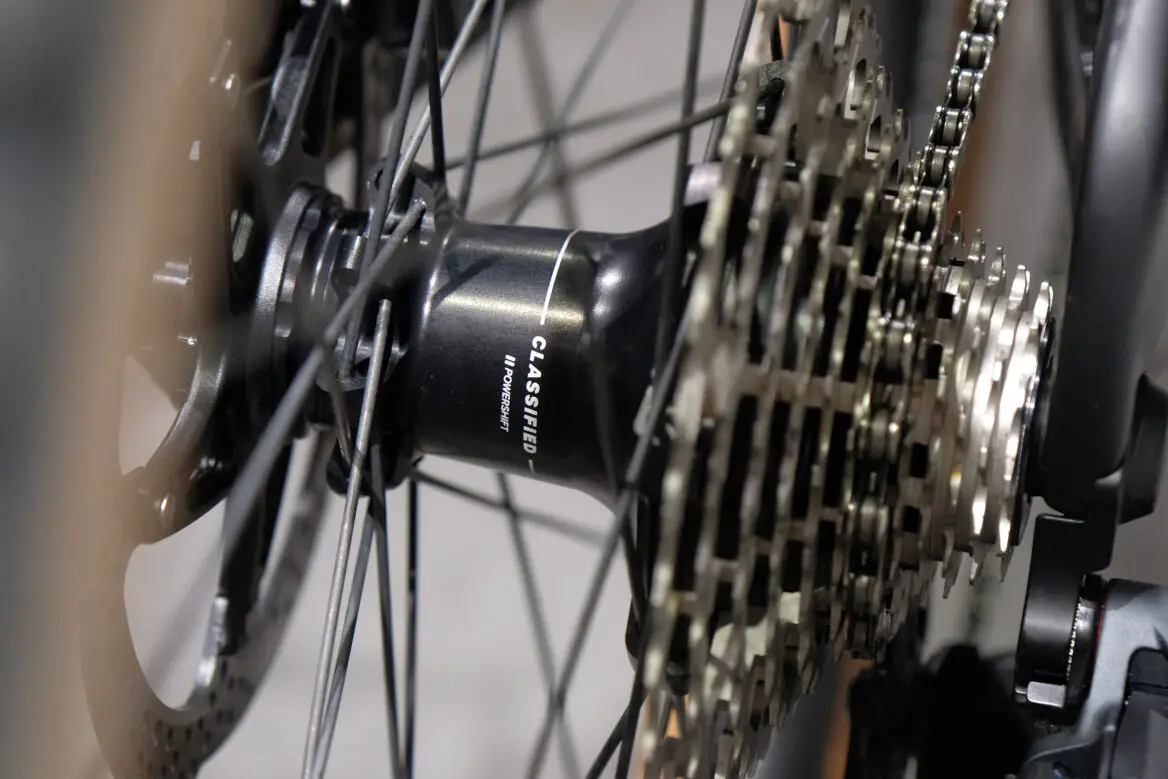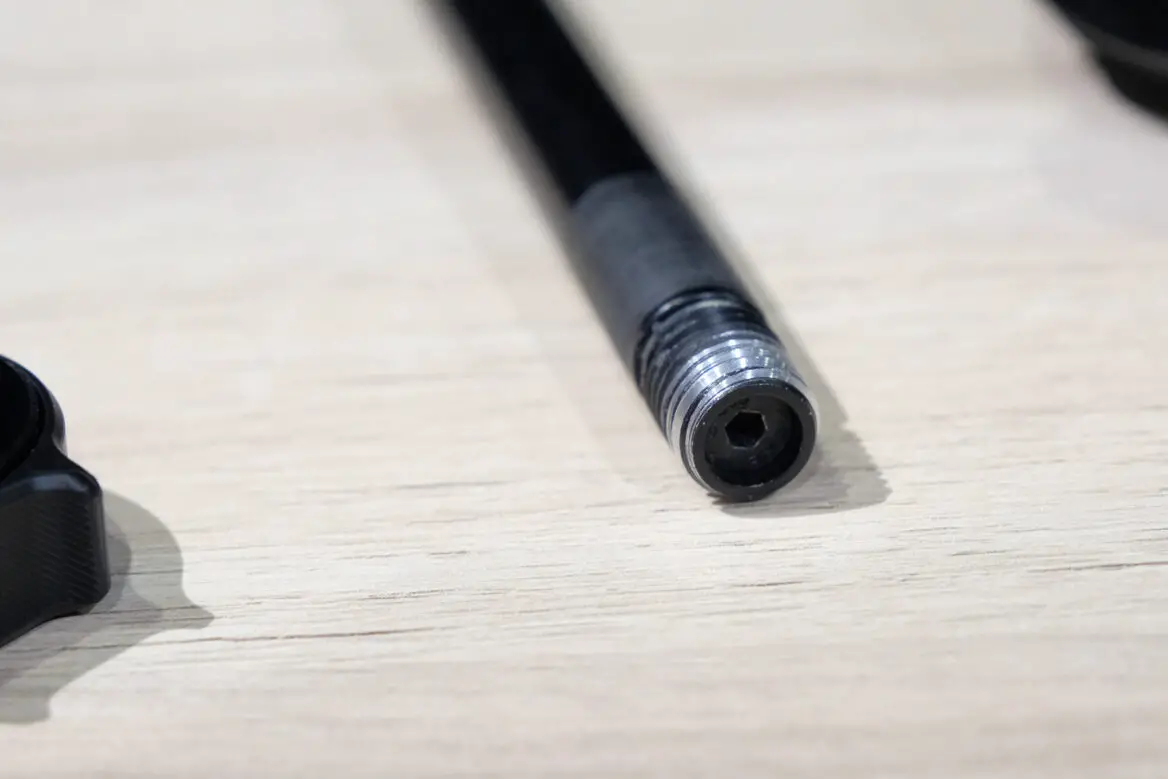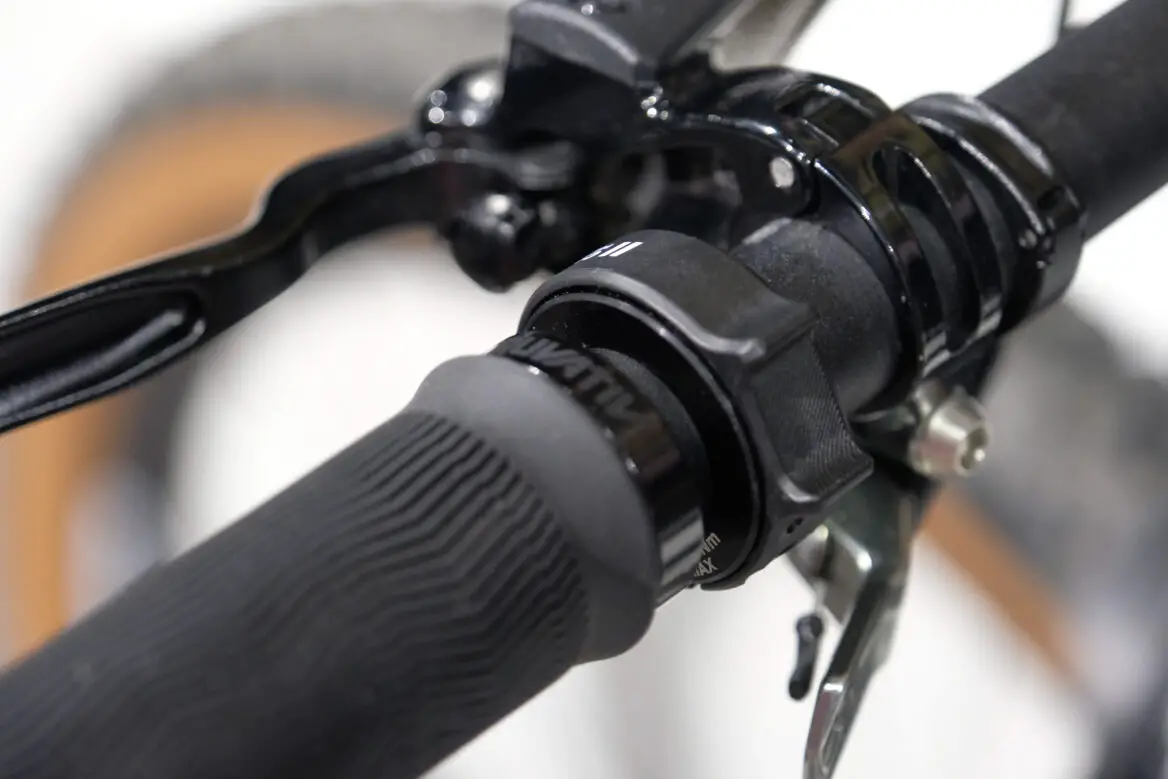If you've got a bike, you need a lock. Whether you are just wanting to deter…
The Classified Powershift system revolves around a two-speed hub, made in Belgium, that is electronically shifted by a remote shifter.

It might surprise you to discover, but after years of refining one-by gear systems, Belgium’s Classified Cycling reckons that it’s time to bring back two-by. Specifically 2×12 that uses a custom 11-40T cassette and its new two-speed, electronically-shifted two-speed hub.
Before you completely dismiss this as another ‘mad inventor in a shed’ story, Classified has some serious industry, and pro-(road)-racer backing and it’s serious about the benefits of a two-by system, even off-road. It’s currently being trialled, and raced, on the road and cyclocross scene, and the brand has recently announced its mountain bike system.
The Powershift System
Let’s start by looking at what’s involved: The Classified Powershift system revolves around a two-speed hub, made in Belgium, that is electronically shifted by a remote shifter. The special hub needs a special cassette, so for the mountain bike system, there’s an 11-40T 12 speed cassette, machined with a hollow cone below the sprockets (as you’ll see on high-end SRAM cassettes) and this mounts to the cone-shaped hub.

So how does it shift? The clever bit is the supplied thru-axle. It features a battery in the ‘lever’ which houses the wireless receiver. The through-axle induces a shift, wirelessly in the hub, with battery life in the ‘thousands of shifts’ mark. The hub is capable of either a 1:1 ratio, or a reduced ratio of 0.7:1. Roughly the kind of shift in ratios you’d get from a 42T – 32T chainset on a mountain bike (or a 50/34T on the road).
The shift is virtually instant – 150m/s and can be done under full load – up to 1000Watts (and tested to more) and it’s done using a very ergonomic and aesthetically-pleasing ring shifter that offers a light, magnetically-sprung up/down shift on the bars (though it can also be incorporated into road shifters). Everything has magnetic-coupled USB chargers to keep the systems all sealed and fully waterproof.

But why?
So, after all the effort to remove the front derailleur from mountain bikes in the last decade, why is Classified keen to bring back the two-by mentality?

Bigger gear ratios is one argument. It’s 11-40T cassette offers a range of 530%, bigger than Rohloff’s 14 speed Speedhub gear hub and bigger than the 520% of SRAM’s biggest 10-52 Eagle cassette. Having a second range of gears means that Classified can offer a 10.5% step size in gearing, which feels more natural than some of the bigger jumps in modern 1×12 cassettes. You can also shift without pedalling (in fact, it’s similar in principle to SRAM’s short-lived Hammerschmidt two-speed cranks, only way lighter and not draggy in the slightest).
There’s also an argument that you can run a bigger chainring, as you’re no longer limited by how big a dinnerplate low gear you have, so bikes can run a 34T or 36T ring, which is often the size of ring that bike suspension is designed around (bike companies don’t employ weedy 28T-toting bike journos, when designing frames, they use people like Nino Schurter) and so your suspension should work better with the chain in the ‘correct’ position. (Though arguably, you’ve increased the weight of the back wheel, which isn’t ideal). The Classified MTB hubs are beefed up with ten pawls per hub instead of the normal five for the road wheels.
And how?
Classified argues that having an instantly-accessible second set of gears, whether bigger or smaller than the ones you’re currently in, will make you a faster rider. It allows you to ride full-gas towards the bottom of a climb and then dump it into the ‘little’ ring, which would otherwise see two or three rear shifts, and then mash up the hill. Once you’re at the top of the hill, you can instantly be back in the ‘big’ ring and back on the gas. The same is true of tight singletrack where you might be braking heavily for corners and can instantly shift into smaller gears ready to power out of them again. For racers, there’s even an 11-34T cassette with even tighter ratios.

All of this comes at a bit of a cost, obviously, but with Classified claiming that it can make a recordable time difference to a tight singletrack loop, there will be racers already interested in the mountain bike system, as there are on the road.
The system includes shifter, axle (with three lengths and six threads available), hub shell and cassette, built onto a carbon wheel from Classified’s wheel partners (which includes DT Swiss and announced today, Hunt). The wheels will be distributed aftermarket in the UK by WindWave.

The Classified Powershift system will be around €2699 for all that, or you can get a hubshell set for building into a new wheel (minus shifter and axle) for €1549 and wheels will start appearing next month, with riders encouraged to try the system for themselves.
Micro-review
And, as a side-note, (I, Chipps) having ridden the 75km Tour of Flanders sportive on a Ridley Grifn bike and Classified wheels, I can testify that the Classified Powershift system does work flawlessly. But that’s on the road. Whether we ‘need’ two-by back off road, you’ll have to wait until we’ve had some wheels in on test for a while.
More details can be found at classified-cycling.cc

You must be logged in to reply to this topic.